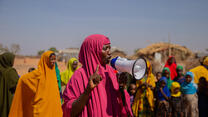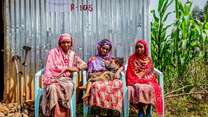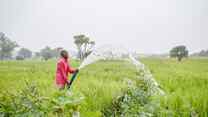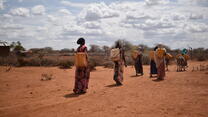Executive Summary
In 2016, the Government of Ethiopia made nine pledges to improve the lives of refugees and host communities. Soon thereafter it rolled out the Comprehensive Refugee Response Framework (CRRF) of the New York Declaration on Refugees and Migrants, and became one the first countries to receive multiyear, concessional financing from the World Bank’s 18th replenishment of the International Development Association (IDA18) sub-window for refugee-hosting nations. Together, these commitments, framework and financing hold the promise of significantly improving the lives of refugees and their host communities across the country.
New policies and programs are underway. The Government is revising its Refugee Proclamation and is expected to expand its policies that will enable more refugees to move freely from camps and access education and jobs. New livelihoods and education projects, supported by the World Bank and UK’s Department for International Development, are being designed to support refugees and host communities. Although still early in his tenure, Prime Minister Abiy Ahmed Ali appears reform-minded and could be a champion of these approaches to the protracted refugee situation.
While progress is being made, there are a number of concerns that, if not addressed, run the risk of hampering impact. The Bank’s working groups for sub-window financed projects are distinct from CRRF working groups, and both appear to have consultative processes that often leave key constituencies, such as refugees, local governments and regional bodies, out of decision-making regarding policies and program design. The World Bank’s earliest investments are weighted towards solutions like industrial parks that do not adequately address refugees’ barriers to decent work and are unlikely to generate enough jobs in the medium term. And the government has not yet passed the Refugee Proclamation—key to ensuring refugees can access their rights, and critical for Bank programs to begin in earnest.
This case study seeks to determine what impact the CRRF and development financing are having—and are likely to have moving forward. Based on these observations, this case study offers recommendations for the Government of Ethiopia, the World Bank, the UN Refugee Agency (UNHCR), Ethiopia’s Administration for Refugee and Returnee Affairs (ARRA), NGOs and other stakeholders. It calls on the Government to swiftly pass the Refugee Proclamation, allowing refugees to move more freely, and access schools and formal jobs. It recommends the World Bank, UNHCR and ARRA streamline their multistakeholder engagement process to ensure key actors, such as different levels of government, regional bodies, refugees, and NGOs can contribute to decision-making processes; and to ensure projects adequately reflect the evidence base, for instance on refugee and host community livelihood skills and needs.



